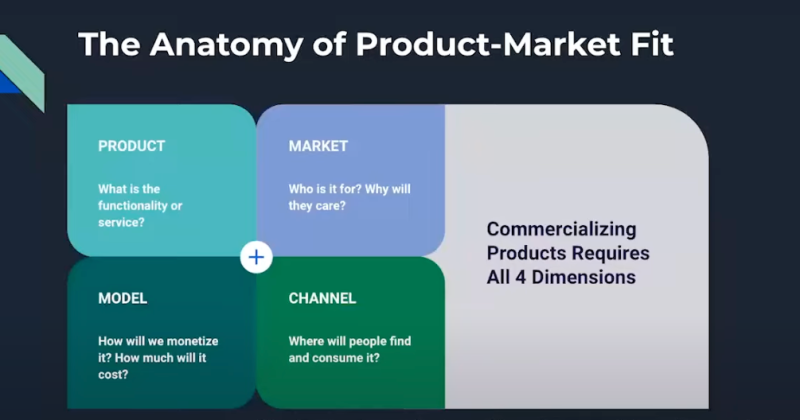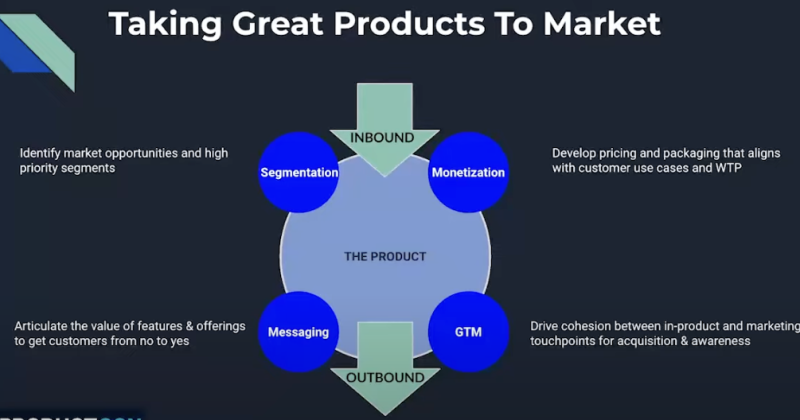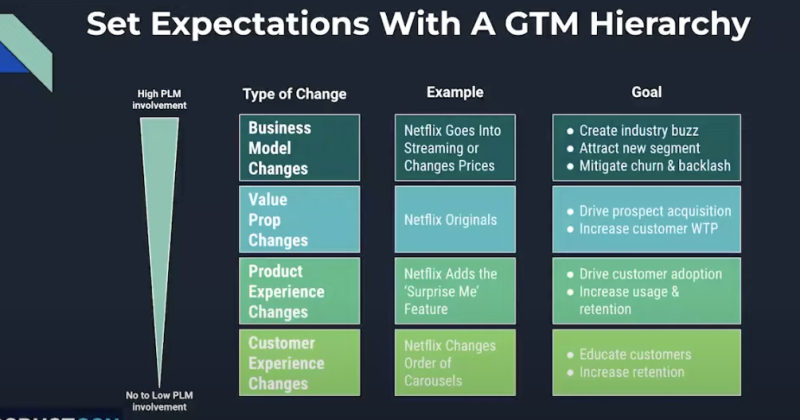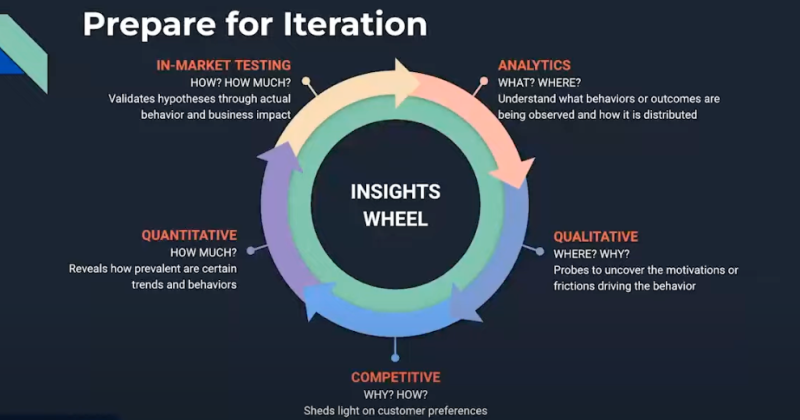Updated: May 8, 2025- 8 min read
Product management and product marketing can sometimes feel like disparate entities, and yet their collective success hinges on tight collaboration. They’re like two sides of the same coin - when perfectly aligned, they can lead to remarkable outcomes.
Editorial note: This post is based on a talk by Jameelah Calhoun, Eventbrite VP of Product and Customer Marketing on Mastering the Relationship between Product Management and Product Marketing and contains additional insights and examples from the Product School team. You can watch the webinar in full above.
Understanding the dynamic duo
Think of the relationship between product management and product marketing as a harmonious duet where each voice or instrument complements the other. Each function has a distinct role to play, but it's their synchronicity that creates the beautiful symphony of a successful product.
Product management is primarily about problem-solving and delivering value. As a Product Manager, your goal is to comprehend customer pain points and develop a product that addresses them. On the other hand, product marketing is all about bringing the value of the product to the market. Product marketers identify the ideal customer, position the product effectively, and develop strategies to drive demand.
Understand the market and the customer
At the heart of a successful product lies a deep understanding of the customer. As Peter Drucker wisely said, the aim is to know your customer so well that the product fits them and sells itself. But it's not just about the customer; it's also about understanding your business model and marketing strategy. All three are crucial to achieving product-market fit.

In this context, product marketing plays an essential role in bridging the gap. They engage in market research to understand market dynamics, trends, and customer needs (inbound marketing). And they define the go-to-market strategy and communicate the product’s value proposition effectively (outbound marketing).

Product commercialization is not a solitary endeavor; it thrives on collaboration. A gap between product management and product marketing can result in a product that fails to resonate with customers or becomes obsolete quickly.
Eventbrite's case study: collaboration for success
Eventbrite's story perfectly illustrates the power of collaboration between product management and product marketing. When developing marketing tools for events, the initial focus was largely on social media marketing.
However, after reassessing the market and customer needs, a shift was made to email marketing, resulting in a tenfold increase in subscriptions in just six months. This illustrates the tremendous potential that lies in integrating product development and product marketing.
Roadmap to effective collaboration
With rapid innovation cycles and an ever-changing marketplace, ensuring the symbiotic relationship between these two functions is pivotal. Below is a roadmap for fostering effective collaboration:
1. Define your go-to-market hierarchy
Understand that not all product launches are equal, and hence their marketing requirements will also vary.

Some may require intensive marketing campaigns, press coverage, and influencer partnerships. In contrast, others might be best served with targeted in-app promotions or communications to existing users. Tailoring your go-to-market strategy to each product's unique needs will not only save valuable resources but will also enhance the effectiveness of your launch.
2. Establish shared practices
Set common goals, understand each other's roles, and start with a shared knowledge base.
3. Set common goals
Whether it's reaching a specific number of users, achieving a set revenue target, or ensuring a particular net promoter score, having shared objectives gives both teams a clear direction.
4. Understand each other's roles
As a product manager, you might be more concerned with feature functionality, while a marketer's main focus might be placed on feature promotion. Knowing the intricacies of each role ensures mutual respect and clearer communication.
5. Share knowledge base
Centralize important documents, research findings, and key decisions so that all stakeholders have access to the same information. This avoids confusion and ensures alignment in decision-making.
6. Prepare for iteration
Product development and marketing are not linear processes. They twist, turn, pivot, and sometimes even loop back. Embracing this iterative nature ensures that both teams remain agile and receptive to feedback.

Here are some of the ways you can iterate:
Research
Regularly tap into market trends, competitor moves, and technological advancements. Staying updated ensures that your strategies are current and relevant.
Analytics
Dive deep into data. How are users interacting with your product? Which marketing channels are most effective? Analytics can answer these and provide insights to drive decisions.
Testing
Whether it's A/B testing a new feature or piloting a marketing campaign, testing allows you to gauge effectiveness and refine your strategies before a full-scale rollout.
7. Adopt a problem-led approach
Innovation is not just about creating cutting-edge solutions; it's about addressing genuine problems. By focusing on real challenges that users face, both product and marketing teams can ensure that their efforts resonate with the target audience.
Take Netflix as an example. Its transition from DVDs to streaming demanded a significant shift in its business model and marketing strategy, indicating a high go-to-market hierarchy. In contrast, the introduction of the "Surprise Me" feature targeted existing users and didn't require extensive marketing, signifying a lower hierarchy.
R.A.F.T-ing together: aligning product and marketing teams for success
To ensure your teams move in tandem, consider the R.A.F.T methodology: Rituals, Artifacts, Fact Space, and Targets. Each element serves as a pillar to keep the teams grounded and in sync.
1. Rituals: setting the rhythm
Rituals provide structure. They are recurring events or practices that help in consistent communication and alignment.
Quarterly product councils
Think of this as a strategic assembly. Here, a cross-functional group congregates to dissect the previous quarter's learnings, challenges, and successes. It's also the perfect time to discuss the upcoming product strategy and get everyone on the same page regarding the vision and direction.
Weekly syncs
These are your tactical touchpoints. These meetings are essential to ensure everyone has the latest information and understands their roles and responsibilities.
Retrospectives (Retros)
A retrospective offers teams a chance to reflect on their performance. By analyzing what went well and what could be improved, teams can iteratively enhance their processes and collaboration.
2. Artifacts: the tangible foundations
Artifacts are your team's shared documents and tools that keep everyone aligned on requirements and goals.
Joint Product and Marketing Requirements Document (PRD & MRD)
This combined document is a holistic view of both the product and marketing perspectives. The Product Requirements give a detailed view of the solution that will be developed, while the Marketing Requirements delve into the market landscape, positioning, competition, and target audience. This document ensures that the product and marketing teams are aligned on both the "what" (product) and the "how" (marketing).
3. Fact Space: knowledge is power
It's crucial to ensure that all team members start from the same knowledge foundation. Sharing insights and data can remove ambiguity and assumptions.
Shared insights
Both teams should have access to data, whether it's market research, customer feedback, or performance metrics. This transparency ensures that decisions are data-driven and everyone is informed.
Dedicated insight-sharing rituals
Having dedicated time to share and discuss data can be invaluable. It ensures that the entire team is making informed decisions based on the same set of facts.
4. Targets: aiming for the bullseye
Targets keep teams goal-oriented. By knowing what metrics to aim for, teams can better strategize and prioritize their efforts.
Balanced Scorecard
This multi-dimensional scorecard allows you to track various performance metrics across Adoption, Usage, Satisfaction, Retention, and Revenue. Each dimension provides insights into different facets of product performance and market reception.
Absolute & Ratio Targets
By setting targets in both absolute numbers (like total subscribers) and ratios (like market share or retention rates), you ensure a comprehensive view of performance. While absolute numbers give a direct measurement of success, ratios provide context, indicating how you're performing relative to the market or your past performance.
Harnessing the power of collaboration
The partnership between product management and product marketing is more than just a functional necessity. It's a strategic alliance that can help create products that don't just meet customer needs but captivate the market. Imbibe the tools, strategies, and mindset necessary for this collaboration, and see your products truly take flight.
Remember, product management and product marketing are not soloists; they are partners in this performance. And when they harmonize, the resulting symphony is nothing short of extraordinary.
Learn more with Product School
Excel in collaborative practices to drive your Product teams to success with our Product Leader Certification (PLC)® designed by successful Product Managers to help you build end-to-end product development skills while offering the hands-on experience you need to lead product teams.
Discover PLC today, and take the first step towards becoming a strategic, successful, and influential Product Manager. Schedule a call today to find out more.
Updated: May 8, 2025





